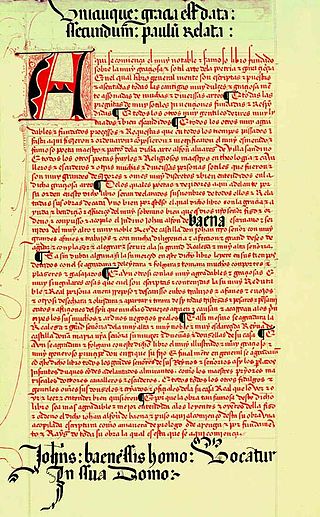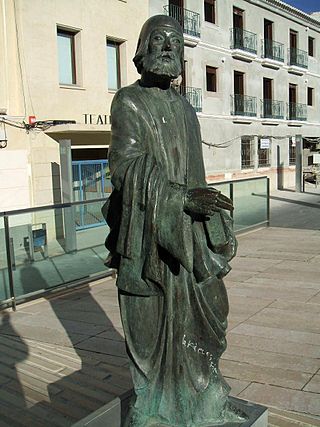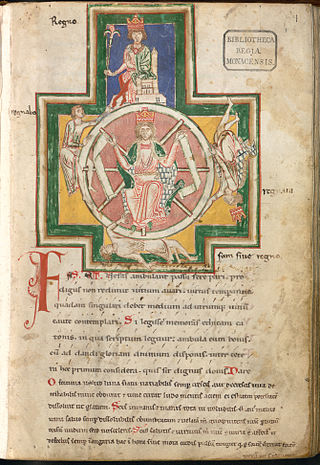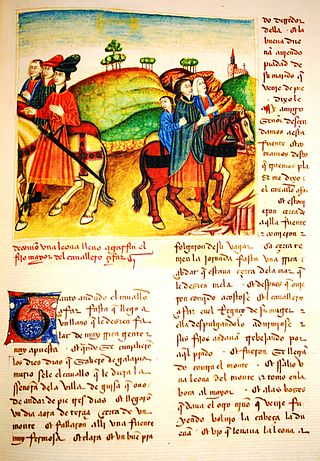Related Research Articles

Luis Cernuda Bidón was a Spanish poet, a member of the Generation of '27. During the Spanish Civil War, in early 1938, he went to the UK to deliver some lectures and this became the start of an exile that lasted till the end of his life. He taught in the universities of Glasgow and Cambridge before moving in 1947 to the US. In the 1950s he moved to Mexico. While he continued to write poetry, he also published wide-ranging books of critical essays, covering French, English and German as well as Spanish literature. He was frank about his homosexuality at a time when this was problematic and became something of a role model for this in Spain. His collected poems were published under the title La realidad y el deseo.

Luis de Góngora y Argote was a Spanish Baroque lyric poet and a Catholic prebendary for the Church of Córdoba. Góngora and his lifelong rival, Francisco de Quevedo, are widely considered the most prominent Spanish poets of all time. His style is characterized by what was called culteranismo, also known as Gongorismo. This style apparently existed in stark contrast to Quevedo's conceptismo, though Quevedo was highly influenced by his older rival from whom he may have isolated "conceptismo" elements.

Juan Ramón Jiménez Mantecón was a Spanish poet, a prolific writer who received the 1956 Nobel Prize in Literature "for his lyrical poetry, which in the Spanish language constitutes an example of high spirit and artistic purity". One of Jiménez's most important contributions to modern poetry was his advocacy of the concept of "pure poetry".

Juan de Mena (1411–1456) was one of the most significant Spanish poets of the fifteenth century. He was highly regarded at the court of Juan II de Castilla, who appointed him veinticuatro of Córdoba, secretario de cartas latinas and cronista real. His works show the influence of Renaissance humanism and place him in the period of transition in Spain from the Middle Ages to the Renaissance.

The Abravanel family, also spelled as Abarbanel, Abrabanel, Avravanel, Barbernell, or Barbanel – literally meaning Ab ("father") rabban ("priest") el – is one of the oldest and most distinguished Jewish families. It first achieved prominence on the Iberian peninsula during the Middle Ages. Its members claim to trace their origin to the biblical King David. Members of this family lived in Seville, Córdoba, Castile-Leon, and Calatayud. Seville is where its most prominent representative, Don Judah Abravanel, once dwelt.
This article concerns poetry in Spain.

Macías was a Galician troubadour and one of the last Galician medieval poets.
Pero Ferrús was a Castilian poet. He lived in Alcalá de Henares.

The Cancionero de Baena was compiled between around 1426 to 1430 by the Marrano Juan Alfonso de Baena for the king John II of Castile and the Constable of Castile Álvaro de Luna. Its full title is Cancionero del Judino Juan Alfonso de Baena.

Juan Alfonso de Baena was a medieval Castilian poet and scribe in the court of Juan II of Castile. Baena, who was a converso, is best known for compiling and contributing to the Cancionero de Baena, an important medieval anthology composed between 1426 and 1465 containing the poems of over 55 Spanish poets who wrote during the reigns of Enrique II, Juan I, and Enrique III, and Juan II.

Laberinto de Fortuna is the major work of Juan de Mena (1411–1456), who completed the poem in 1444. It is an epic poem written in "arte mayor". Though the title implies an examination of Fortune, the work is essentially a propagandistic piece in favor of Castilian political unity behind Álvaro de Luna, the court favorite of King Juan II of Castilla. It includes considerable social satire criticizing corrupt nobles and urging the king to take action against them. The Labyrinth was much read during the 15th and 16th centuries, although its linguistic and structural complexity led to the publication of a "glossed" version in 1499. The work is also known as Las treszientas because it consists of 300 stanzas.
FernánPérez de Guzmán (1376–1458) was a Spanish historian and poet. He belonged to a family distinguished both for its patrician standing and its literary connections, for his uncle was Pero López de Ayala, Grand Chancellor of Castile, historian and poet, and a kinsman was the Marquis of Santillana, one of the most important authors of the time of Juan II of Castile. Part of his verse, such as the "Proverbios" and the "Diversas virtudes", is purely moral and didactic. The more important part is represented by the panegyrical Loores de los claros varones de España, which in 409 octaves gives a full account of the leading figures in Spanish history from Roman times down to that of Benedict XIII. The most notable of his prose historical compositions is the Generaciones é Semblanzas, a collection of biographies which constitutes the third part of a large compilation, La mar de historias. The first two parts of this work, perhaps suggested by the Mare historiarum of Johannes de Columna, are devoted to a perfunctory account of the reigns of the sovereigns of pre-Arabic times. The third part, the "Generaciones", contains thirty-six portraits of contemporary personages, especially of members of the courts of Henry III of Castile and Juan II, and furnishes an example of character painting in Spanish literature.

Juan Rodríguez de la Cámara (1390–1450), also known as Juan Rodríguez del Padrón, was a Galician writer and poet, considered the last poet of the Galician school.

Diego de Torres Villarroel was a Spanish writer, poet, dramatist, doctor, mathematician, priest and professor of the University of Salamanca. His most famous work is his autobiography, Vida, ascendencia, nacimiento, crianza y aventuras del Doctor Don Diego de Torres Villarroel.

Francisco de Rioja was a Spanish poet. Rioja was a canon of Seville Cathedral and a member of the Spanish Inquisition.

The title of Hijo Predilecto de Andalucía or in the case of a female recipient Hija Predilecta de Andalucía is an honorific title granted annually on August 10 according to decree 156/1983 of the Andalusian Autonomous Government, recognizing exceptional merit or distinction in relation to the Andalusian region, through scientific, social or political actions or works that have redounded to the benefit of Andalusia. It is the highest distinction of the autonomous community of Andalusia.

Víctor Rodríguez Núñez is a Cuban poet, journalist, literary critic and translator.

Medieval Spanish literature consists of the corpus of literary works written in medieval Spanish between the beginning of the 13th and the end of the 15th century. Traditionally, the first and last works of this period are taken to be respectively the Cantar de Mio Cid, an epic poem whose manuscript dates from 1207, and La Celestina (1499), a work commonly described as transitional between the medieval period and the Renaissance.
Carajicomedia is a 16th-century Spanish poetic work of 117 stanzas composed of eight 12-syllable verses. It appeared for the first and only time in print at the end of the Cancionero de obras de burlas provocantes a risa (1519). It is a sexual parody of a little more than a third of Juan de Mena’s very famous but now unfashionable El Laberinto de Fortuna, an allegorical vision poem written in very Latinate language. The text parodied, however, is actually the first printing of Hernán Núñez's edition of El Laberinto entitled Las Trezientas (1499), because Carajicomedia, not only parodies Mena's poem, but also Núñez's prologue and notes.
Angelina de Grecia was a woman of Balkan origin who later established herself in Segovia.
References
Imperial, Francisco. El dezir de las syete virtudes y otros poemas. Ed. Colbert I. Nepaulsingh. Madrid: Espasa Calpe, 1997.
Morreale, Margherita. "El 'dezir de las syete virtudes' de Francisco Imperial. Lectura e imitación prerenacentista de la Divina Comedia". In In Lengua, Literatura, Folklore: estudios dedicados a Rodolfo Oroz. Santiago: Universidad de Chile, 1967. 307-377.
Woodford, Archer. “Edición crítica del Dezir a las siete virtudes, de Francisco Imperial.” Nueva Revista de Filología Hispánica 8 (1954): 268-94.